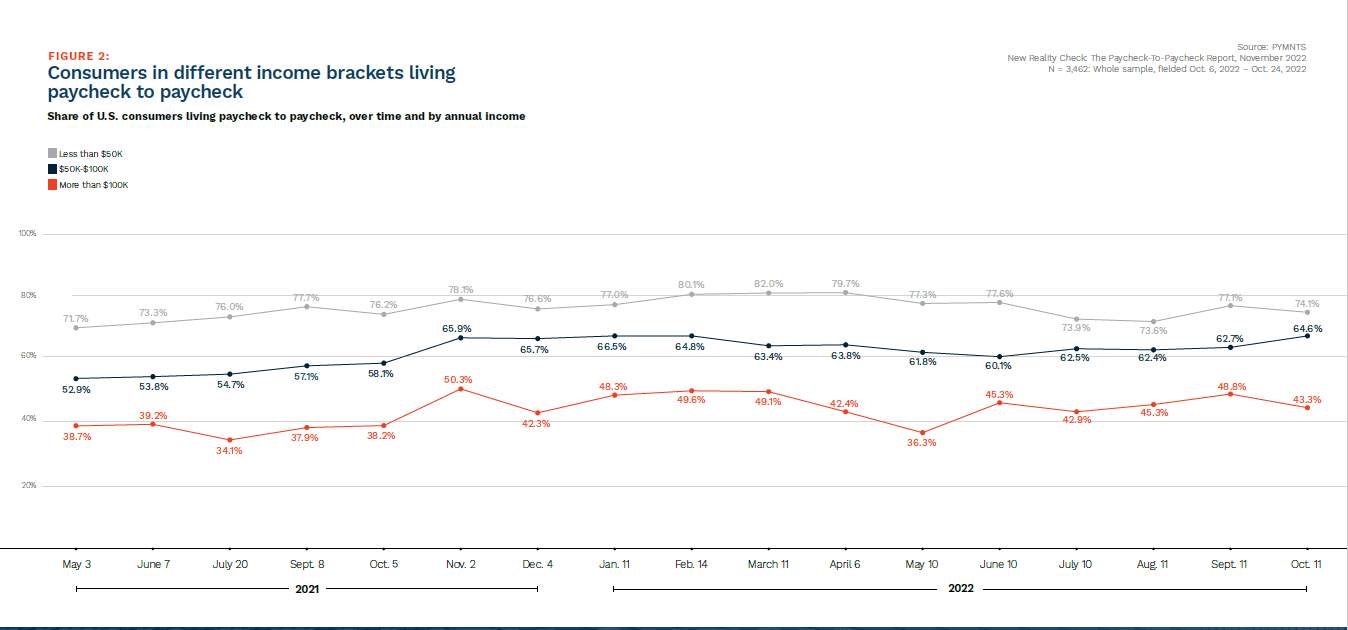Consumers Want Deals More Than Experiences This Christmas

Personalized experiences have slipped below bargains on holiday shoppers’ lists this season.
This shift represents a sharp reversal in customer preference amid record-high inflation that has impacted the rising cost of living. As recently as May, over 65% of shoppers were willing to pay premium prices for a tailored retail experience. This trend has, at least temporarily, reversed.
Retailers’ approaches to personalization may include online merchants utilizing big data to recommend items in promotional emails, virtual fitting rooms and tailored rewards programs. Or, in the case of brick-and-mortar merchants, it may mean using an omnichannel approach to personalize sales.
According to the most recently published PYMNTS and LendingClub collaboration, New Reality Check: The Paycheck-to-Paycheck Report, Holiday Shopping Edition, when asked about which factors determine their choice of retailers, only 5.4% of consumers cited a personalized experience. This paled in comparison to discounts or sales (60.4%) and free shipping (48.3%) and was also exceeded by buy now, pay later (BNPL) (11.4%) and digital wallet options (9.3%).
Consumers’ growing demand for cost-cutting measures isn’t surprising. Overall inflation has risen 7.7% year over year, according to the latest Consumer Price Index published by the Bureau of Labor Statistics. The increased costs of goods and services across nearly all categories have stretched most Americans’ wallets: 60% of surveyed consumers currently live paycheck to paycheck, including 43% of those earning over $100,000 annually. With nearly 20% of respondents struggling to pay their monthly bills, there isn’t room for extras in many holiday budgets this season.
The latest New Reality Check survey also found that the number of paycheck-to-paycheck earners has steadily increased across income demographics, up four percentage points since October 2021. In an uncertain economic landscape, this trend is unlikely to reverse in the near future. Seventy-four percent of consumers making less than $50,000 per year and 65% making between $50,000 and $100,000 currently live paycheck to paycheck.

Still-rising interest rates and the prospect of a longer inflation cycle than previously predicted could present a long-term revenue challenge for merchants. Additionally, consumers’ changing shopping preferences during this holiday season may become a bigger factor across age and income demographics.
However, shoppers’ recent shift toward budgetary factors may be short-lived and could swing back when consumer sentiment rebounds. In light of that, retailers may not want to abandon their personalization strategies altogether, especially if it provides a more seamless shopping experience without added consumer cost.
The uncertain economic landscape has clearly impacted consumer spending habits this holiday season. This may signal a need for retailers to tailor their customer loyalty approaches to meet evolving demands. Strategies could include exclusive discounts or sales and other “insider” perks. Although these types of pivots could be costly and time-consuming, the most agile retailers may leverage the shift in consumer sentiment as an opportunity to earn long-term loyalty even after the market has stabilized.
